-

-
GETTING THERE
Kyoto does not have its own airport. Visitors have to take a bus or train there from Osaka's Kansai International Airport. There are multiple flights every day from Singapore to Osaka.
Those moving within only Kyoto city can rely on its extensive subway lines. Areas beyond can be reached by using the Japan Rail Pass (www.japanrailpass.net/en) or by other rail lines as well as local buses.
Learning about tea culture in Kyoto
Wander through centuries-old tea gardens and take part in elaborate tea ceremonies in Kyoto, the birthplace of tea in Japan
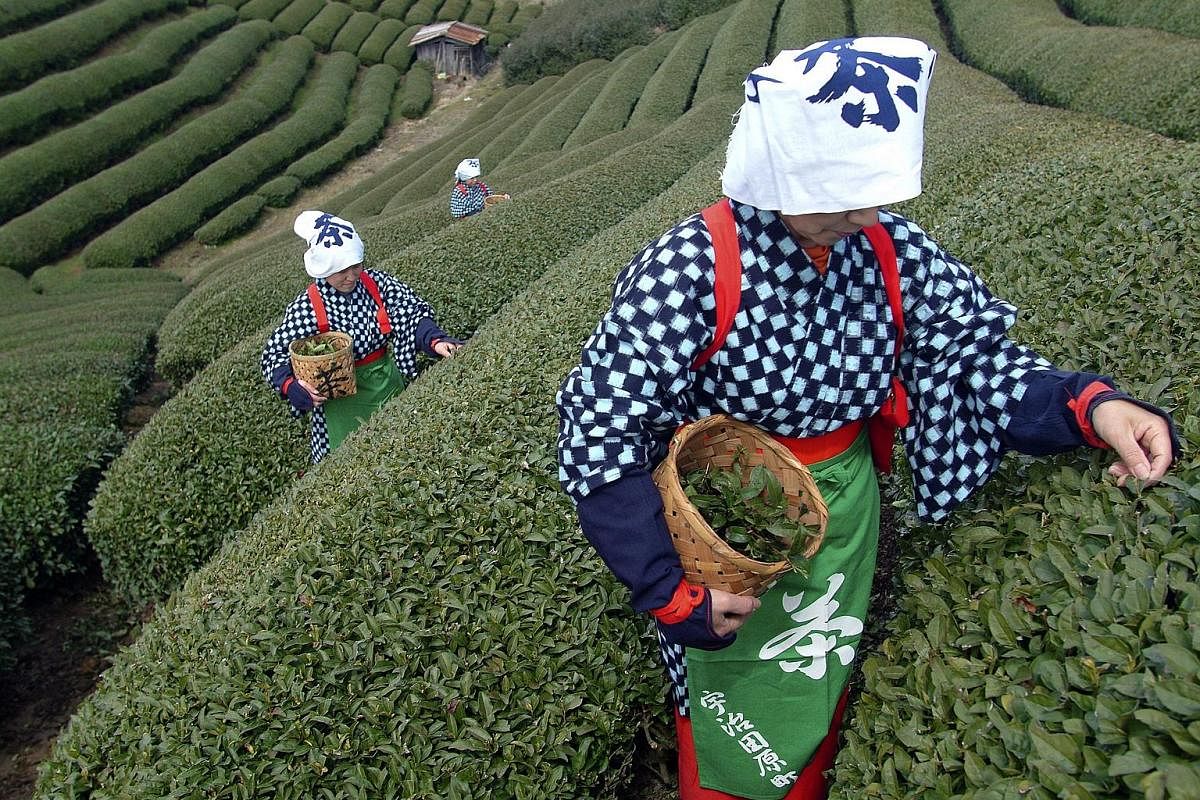
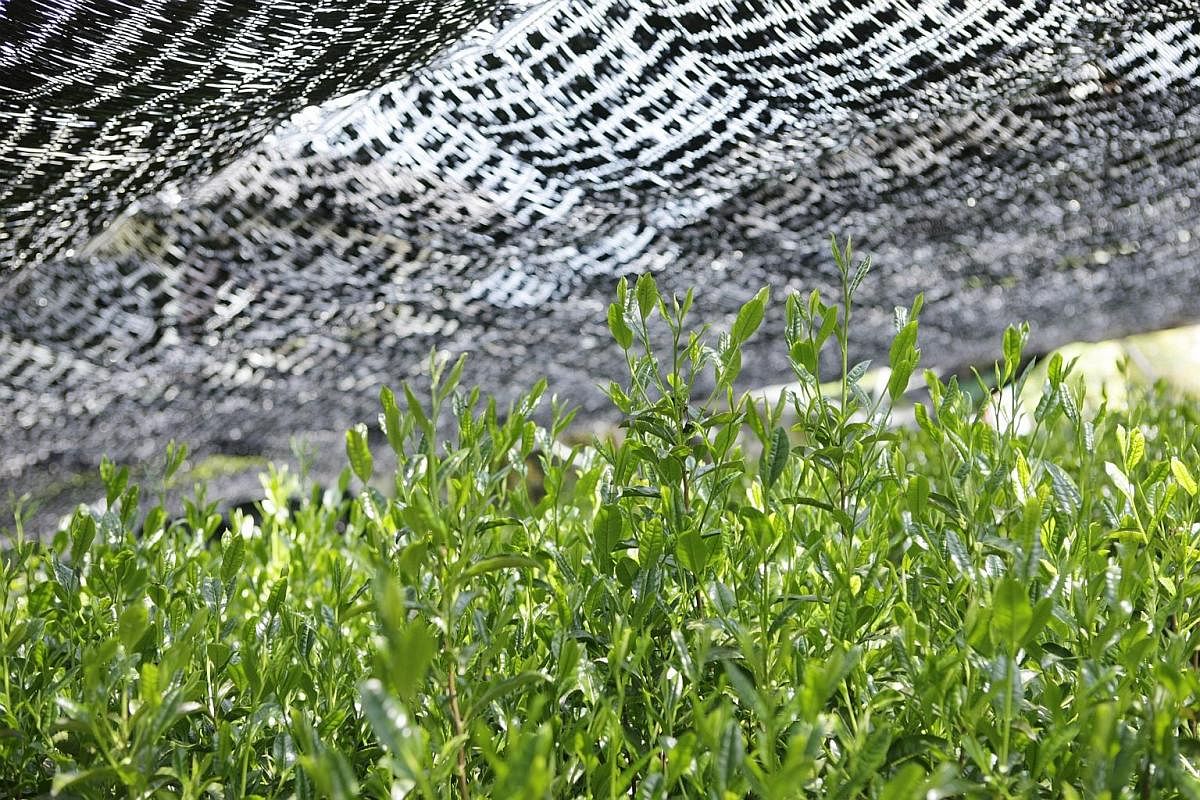
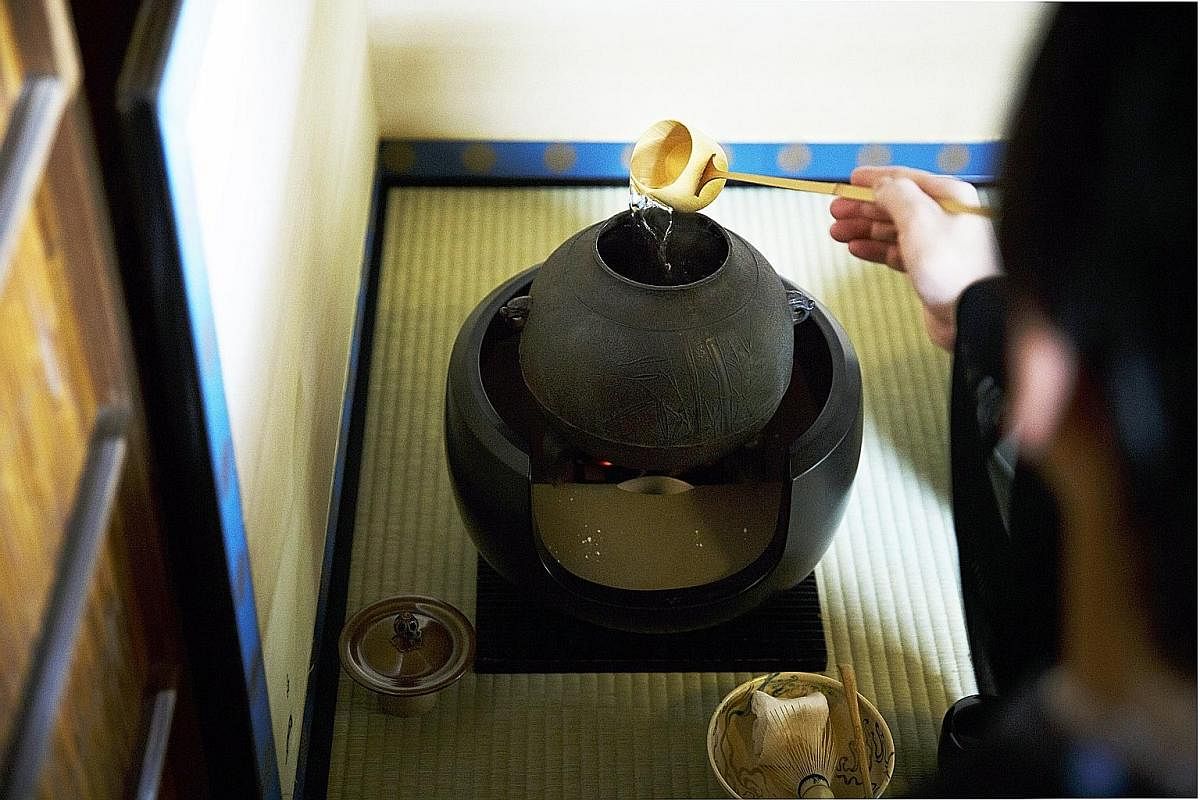
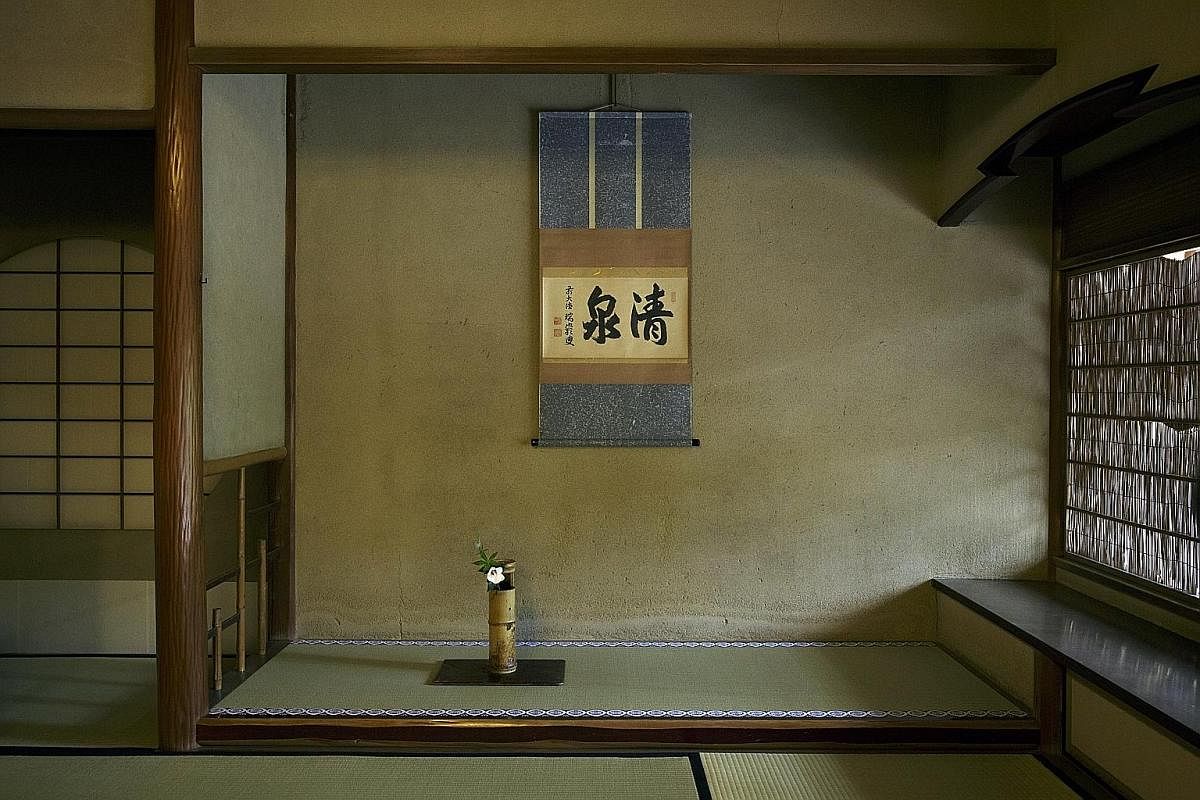
Legs tucked under us, bowing awkwardly to one another, we take turns to down cups of foamy green tea after mumbling "osaki ni" - the polite Japanese ritual phrase meaning "excuse me for going ahead of you".
We are taking part in a Japanese tea ceremony, where every step and gesture - down to the smallest rotation of a tea cup - are part of a centuries-old tradition.
In some ways, the Japanese attitude towards tea is a microcosm of their culture. There is an unstinting attention to detail, a reverence for history and, above all, a great pride in the work they do.
This is the realisation that coalesces over the four days that I am in Kyoto, the ancient capital that prides itself on being the birthplace of Japanese green tea.
THREE SHADES OF TEA
My most startling encounter with green tea comes on the last day of our travels, during a visit to Maikonocha-Honpo (maiko.ne.jp/english), an award-winning store a halfhour's drive south of Kyoto city, where just 100g of the best tea can cost 27,000 yen (S$335).

I am with a group of writers from around the world and all of us are old hands at this now, having sampled various blends of Japanese tea over the past week. As with every cup of tea that has been prepared for us, our host goes about the process with great care.
He ladles water from an iron kettle hanging over the Japanesestyle hearth, making sure it is at the correct temperature - 40 deg C - before pouring it into the bowl of tea leaves. We patiently wait out the 90 seconds for it to steep.
But when the final product is presented to me, I am puzzled. I have been given a tiny saucer - exactly the size used to hold condiments at a Singapore kopitiam - rather than a tea cup.
In it are a few drops of gyokuro tea, barely enough to cover the base of the saucer. What exactly, I wonder, am I to taste?
But the sipstartles me. This is unmistakably green tea, yet its umami flavour is so rich, it is as if I have drunk a mouthful of savoury chicken broth. It is not salty in the least, yet tastes as if it should be.
My perplexed tastebuds struggle to make sense of this experience. Judging by the expressions of wonderment on the faces of my companions, they feel the same way.
The Japanese are as serious about tea as the French are about wine. Just as wine comes in red, white and rose, green tea comes in three shades.
There is bright-green matcha, or powdered tea. Better known in Singapore as an ingredient in cakes and ice cream, this frothy tea arrived in Japan 800 years ago as the beverage of emperors.
Tea plants destined for matcha are grown in the shade, arresting the chemical processes that give sencha its sharp, astringent aftertaste and instead imparting a sweet, rich flavour.
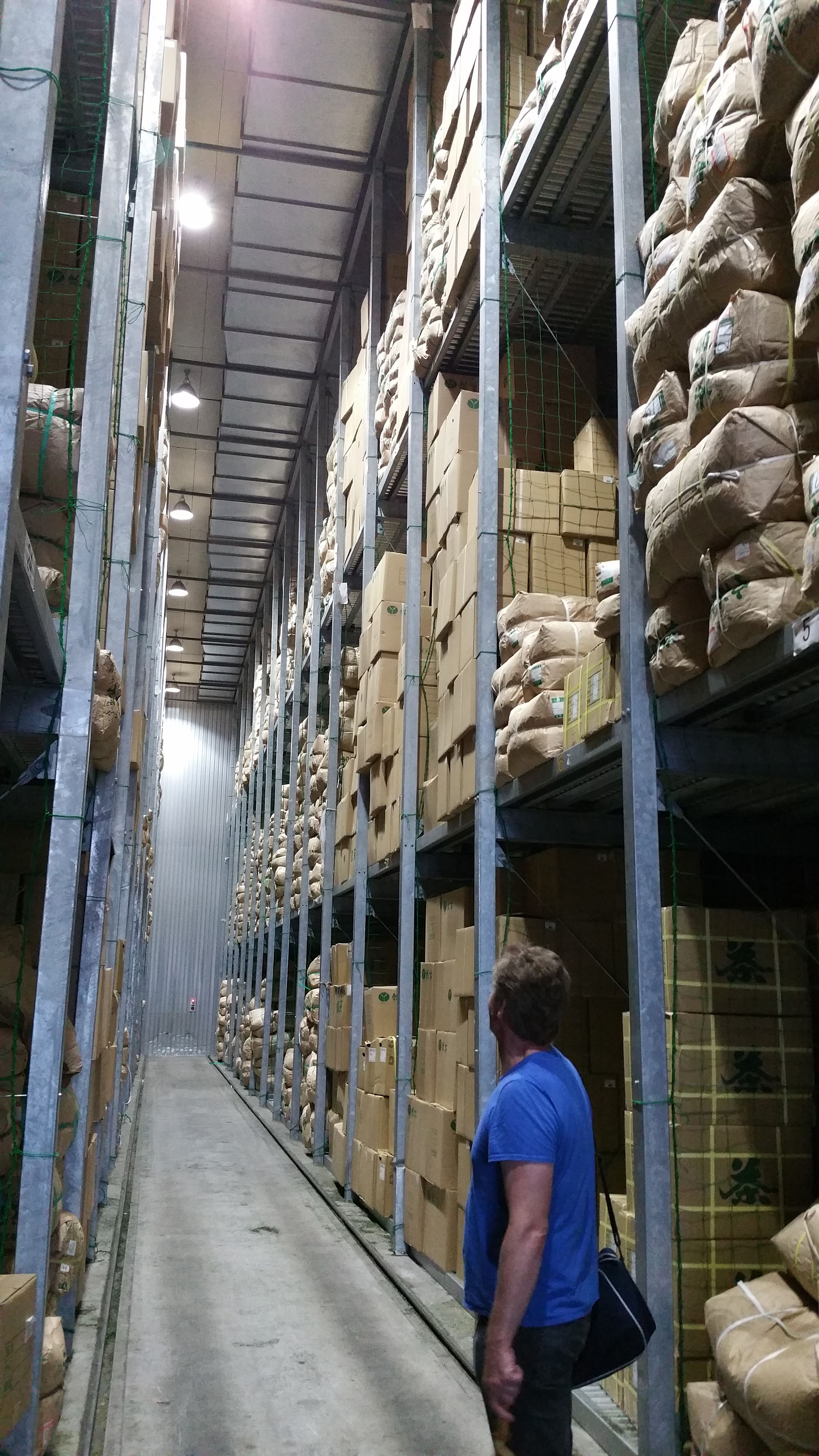
Then, we sample cups of sencha, a mild, light green brew most often served at Japanese restaurants during meals. This mellow tea has a "sweet, refreshing fragrance" and goes with virtually any food, says Ms Ayako Ashikaya, who is hosting a tea-tasting session for us at Ippodo tea store (ippodo-tea.co.jp/en) in Kyoto city.
Unlike matcha, it is grown in full sunlight, then steamed and kneaded, rather than being ground into fine powder.
Still most surprising to me are the deep green leaves of gyokuro tea, the colour of pine needles, which Ms Ashikaya describes as having "a subtle scent of forest mist" with a strong umami flavour.
Shade-grown like matcha, gyokuro is steamed and rolled into long needles like sencha, rather than ground into powder.
This puts it somewhere between the two, but its taste is wholly unique. To fully appreciate it, it is to be sipped "little by little, not gulped", Ms Ashikaya says.
Gyokuro has also been described as having a flavour not unlike that of nori soup, she adds, and as I taste it I find that I agree.
Tea and its related products can be found all over Kyoto, especially along the street known as Chawanzaka, or Teapot Lane, which leads to the famous Kiyomizudera Temple (kiyomizudera.or.jp/en).
In the largest stores, bright packets of tea-flavoured biscuits jostle for shelf space with boxes of roasted-tea KitKat.
Next door, slender bamboo tea whisks - used to whip hot water and matcha powder into a frothy brew - are displayed under gleaming glass counters.
But it is in the smallest and most unassuming shops that the real treasure is found.
These are dedicated to green tea in all its forms: powdered, loose-leaf and modern, fuss-free teabag.
MAKING A PILGRIMAGE
As the days in Kyoto pass, I begin to feel as if I am on a pilgrimage of sorts. With each place we visit - tea farm, tea plantation, tea production plant - I learn a little more about the drink that has captivated Japan for more than eight centuries.
On one memorable afternoon, we stand huddled under umbrellas, gazing at rows of tall tea bushes in Okunoyama-en - the last of seven ancient fields in the tea-producing Uji region which were once designated the Seven Excellent Tea Gardens by 15th-century Japanese shogun Ashikaga Yoshimitsu.
Its owner, Mr Chotaro Horii, is dressed in an incongruous combination of a suit and rubber boots. Raising his voice over the patter of rain, he tells us that some plants in his tea field are more than 600 years old.
On another occasion, we drive through Wazuka, a largely agricultural area an hour's drive south of Kyoto city, awash in the deep jadegreen of tea plantations and bright yellow-green of rice paddies.
Halting beside the Ishitera tea fields, we snap selfies with the hilly landscape, then spend the better part of half an hour wandering through the rows of neatly lined shrubs.
Yet what I enjoy most is the visit to the Kokyo Tencha Processing Plant in the same area, where the autumn harvest is steamed, dried and separated into leaves and stems.
The entire process takes 40 minutes and Mr Takashi Kitazawa, the owner's son, tells me that the factory can process up to 1,200kg of tea leaves in a day.
Although 1kg of leaves from the autumn harvest sells for about 600 yen, he adds, the higher-quality leaves from the spring crop go for 10 times that amount as they are picked by hand, rather than machine-harvested. Stems, on the other hand, sell for only 50 yen a kg because of their coarser, less refined flavour.
Modern technology - specifically air-conditioned warehouses - is responsible for the year-long supply of what is traditionally a seasonal crop.
On my visit to one of these warehouses, it is stuffed to the rafters with enormous wooden crates and paper-wrapped parcels on tall metal racks.
Cold mist rolls out of the open doors and the single-digit temperature is low enough to raise goosebumps on my arms. What I notice most, however, is the fresh, sweet fragrance of tea that permeates the air.
TEA AND THOUGHTFULNESS
I hear the judges before I see them. They are huddled around long tables laden with dozens of teacups, chanting aloud in unison, counting down to the end of the 90-second steeping time.
At the 38th Uji Tea Competition, held to celebrate the best tea in what is widely accepted as Japan's best tea-growing region, points are given for taste, colour and flavour and each tea is sniffed, tasted and scrutinised with an expert eye.
I peek at the score sheet for flavour, which is filled with at least a dozen smaller boxes. Our interpreter tells me that these are for the judges to indicate if a tea has a "green smell", "leaf damage smell", "is too damp" or any of a dozen other subtle characteristics.
It would bewilder anyone but a connoisseur, although in the case of Mr Motoharu Koyama, it is the task he has been trained for by his father since he was a boy.
Mr Koyama is the director of Marukyu-Koyamaen (marukyu-koyamaen.co.jp/english; tours available from 500 yen), a tea company that traces its pedigree back to the 17th century.
Part of his job is to re-create the company's signature tea blends with each year's new harvest - a task that requires him to create the flavours of last year's blends with this year's leaves, completely from memory - and he has therefore never indulged in tobacco or spicy foods that could ruin the sensitivity of his palate.
During a tour of one of his firm's production plants, a winding maze of modern equipment for processing raw tea leaves, our guide leads us to a dark window and flicks on a single dim light.
Behind the window, an army of round, grey electric stone mills stretch out into the shadows, endlessly grinding tea leaves into fine matcha powder with each revolution.
Our guide, Ms Cristina Geisse, tells us they are kept in the dark because light and heat can cause the powder to lose its taste. Each stone mill takes an hour to grind just 40g of matcha - enough to make only 20 small bowls of tea.
She goes on to explain that historically, the annual tea harvest was an occasion for celebration as "by the end of the season, you would probably be drinking very bad tea".
"To celebrate, families would wear new kimonos and change the tatami mats," she adds.
She hands me a bowl of sweetsmelling leaves, a blend perfected over generations and the product of months of painstaking labour.
Now I understand why the Japanese have venerated this beverage, which we have been drinking for days and why it is traditionally offered to honoured guests.
And in response, I can only say "itadakimasu", or in English, "I humbly receive".
•The writer's trip was hosted by the Japan External Trade Organisation.
Join ST's Telegram channel and get the latest breaking news delivered to you.
A version of this article appeared in the print edition of The Sunday Times on January 01, 2017, with the headline Learning about tea culture in Kyoto. Subscribe

